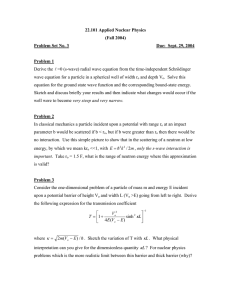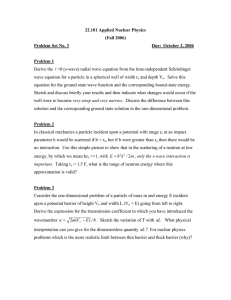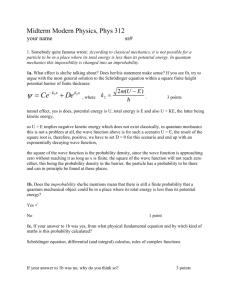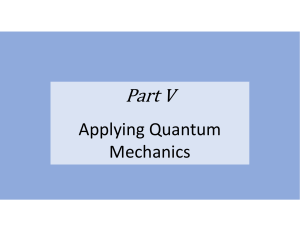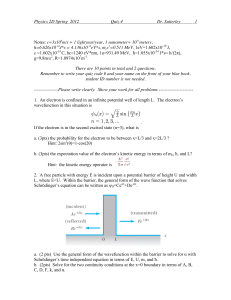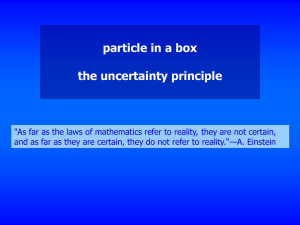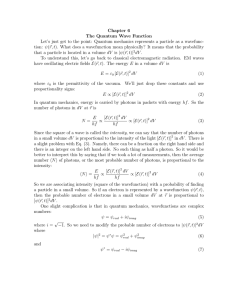Quantum Mechanics Electrons as Waves
advertisement
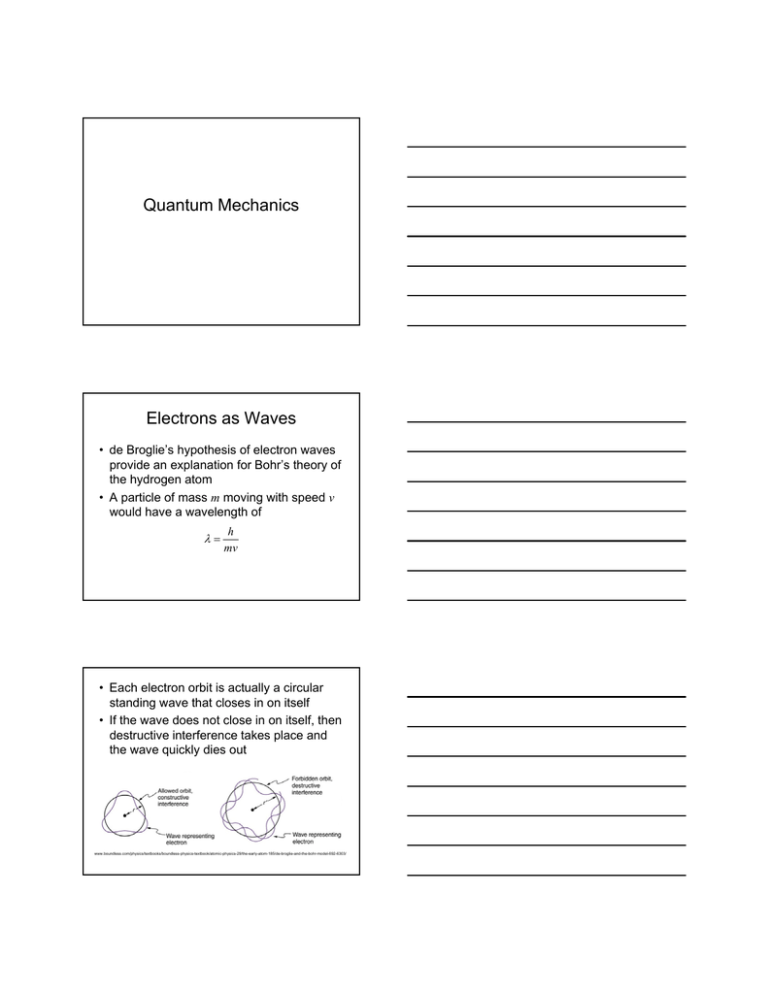
Quantum Mechanics Electrons as Waves • de Broglie’s hypothesis of electron waves provide an explanation for Bohr’s theory of the hydrogen atom • A particle of mass m moving with speed v would have a wavelength of h mv • Each electron orbit is actually a circular standing wave that closes in on itself • If the wave does not close in on itself, then destructive interference takes place and the wave quickly dies out www.boundless.com/physics/textbooks/boundless-physics-textbook/atomic-physics-29/the-early-atom-185/de-broglie-and-the-bohr-model-692-6303/ • The only waves that persist are those for which the circumference of the orbit has a whole number of wavelengths • So for an orbit of radius r 2r n nh 2r mv nh mvr 2 • The electron is not oscillating in a circular wave, but rather the wave pattern represents the amplitude of the electron wave • But Bohr’s model does not work for atoms other than hydrogen • A new theory was needed • That new theory is called quantum mechanics The Schrödinger Theory • Erwin Schrödinger (1926) provided a realistic, quantum model for the behavior of electrons in atoms • There is a wave associated with the electron called the wavefunction, ψ(x,t), and is a function of position x and time t • Given the forces acting on the electron, the wave function can be determined by solving the Schrödinger equation 2 2 i ( r , t ) (r , t ) t 2m or the simplified 1 dimensional form 2 2 i t 2m t 2 • The wavefunction is not directly observable but its amplitude is significant • The square of the amplitude of the wavefunction is proportional to the probability per unit volume of finding the particle (called probability density) P(r ) V 2 The Heisenberg Uncertainty Principle • Werner Heisenberg (1927) • The principle applied to position and momentum states that it is not possible to measure simultaneously the position and momentum of something with indefinite precision • This has nothing to do with imperfect measuring devices or experimental error • If represents a fundamental property of nature • The uncertainty Δx in position and the uncertainty Δp in momentum are related by xp h 4 • This says that making momentum as accurate as possible makes position inaccurate, whereas accuracy in position results in inaccuracy in momentum • If one is made zero, the other has to be infinite • The uncertainty principle also applies to measurements of energy and time • If a state is measured to have energy E with uncertainty ΔE, then there must be an uncertainty Δt in the time during which the measurement is made, such that Et h 4 Quantum Tunnelling • According to classical mechanics, if a particle with energy E approaches a barrier with energy U0, then the particle will only be able to pass the barrier if E>U0 • However, the wavefunction associated with the particle must be continuous at the barrier and will show an exponential decay through the barrier • The wavefunction must also be continuous on the other side of the barrier so there is a probability that the particle will tunnel through the barrier hyperphysics.phy-astr.gsu.edu/hbase/quantum/barr.html • As a particle approaches the barrier, it is described by a free particle wave function • When it reaches the barrier, it must satisfy the Schrodinger equation in the form 2 2 ( x) ( E U 0 ) ( x) 2m x 2 • Which has the solution Ae x where 2m(U 0 E ) 2
